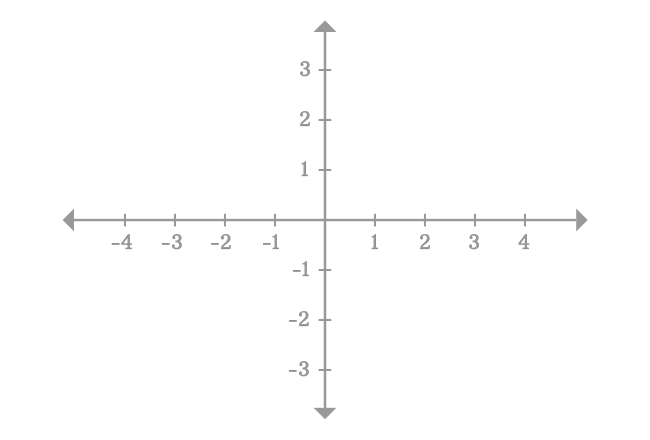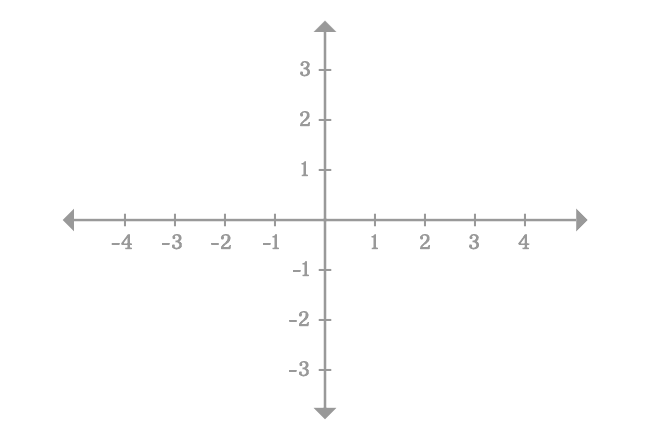The value of a function as its input approaches some value from left hand side is called the left-hand limit, and also called as the left sided limit.
Assume, $x$ is a variable, a function is defined in terms of $x$ and the function is expressed as $f(x)$ simply. Let $a$ represents a constant and $L$ represent the limit of the function $f(x)$.
The left sided limit of the function $f(x)$ is $L$ as the variable $x$ approaches $a$ from left side. In this case, $a^-$ is the closer value of $a$ from left side in Cartesian coordinate system. It can be written in the following mathematical form.
$L \,=\, \displaystyle \large \lim_{x \,\to\, a^-}{\normalsize f(x)}$
Remember, the representation $x \,\to\, a^-$ means it is neither $a$ nor $-a$ but less than $a$ and very closer to $a$.
The concept of left-sided limit can be understood from the following example.
Evaluate $\displaystyle \large \lim_{x \,\to\, 2^-}{\normalsize (x^2-3)}$
In this case, we have to calculate the value of the function $x^2-3$ as the input $x$ closer to $2$ from left-side in the Cartesian coordinate system. According to the two-dimensional space, $0$ and $1$ are near points from left-side of point $2$. So, calculate the values of the function for both values.

But, the point $x = 0$ is two units away from the point $x = 2$ in left-side. Similarly, the point $x = 1$ is one unit away from the point $x = 2$ in left-side. They both are near points but not closer from left-side of the point $x = 2$.
The point $x = 1.9$ is closer point to point $x = 2$ than $x = 0$ and $x = 1$. So, calculate the value of the function.
$f(1.9) = (1.9)^2-3 = 0.61$
There is no doubt about it, the point $x = 1.9$ is closer to point $x = 2$ but the point $x = 2$ is $0.1$ unit away from point $x = 1.9$ and the difference between them is not negligible. Hence, the value of the function $x^2-3$ at point $x = 1.9$ cannot be taken as the limit of the function as $x$ approaches $2$ from left side.

So, we have to consider the points, which are very closer to the point $x = 2$, for example $x = 1.99$ $,$ $1.999$ $,$ $1.9999$ and so on.
For $x = 1.99$ $,$ $1.999$ $,$ $1.9999$ and $1.99999$, the values of the function are $0.9601$, $0.996001$, $0.99960001$ and $0.99996$ respectively.
In fact, $1.99$ $\ne$ $1.999$ $\ne$ $1.9999$ $\ne$ $1.99999$ but $1.99 \approx 2$ $,$ $1.999 \approx 2$ $,$ $1.9999 \approx 2$ and $1.99999 \approx 2$. Similarly, $0.9601$ $\ne$ $0.996001$ $\ne$ $0.99960001$ $\ne$ $0.99996$ but $0.9601 \approx 1$ $\,$ $0.996001 \approx 1$ $,$ $0.99960001 \approx 1$ and $0.9999600001 \approx 1$.
For better understanding, it is displayed in a tabular form.
| $\Large x$ | $f(x)$ | ||
|---|---|---|---|
| $Actual$ | $Approximate$ | $Actual$ | $Approximate$ |
| $0$ | $0$ | $-3$ | $-3$ |
| $1$ | $1$ | $-2$ | $-2$ |
| $1.9$ | $1.9$ | $0.61$ | $0.61$ |
| $1.99$ | $2$ | $0.9601$ | $1$ |
| $1.999$ | $2$ | $0.996001$ | $1$ |
| $1.9999$ | $2$ | $0.99960001$ | $1$ |
| $1.99999$ | $2$ | $0.9999600001$ | $1$ |
| $\vdots$ | $\vdots$ | $\vdots$ | $\vdots$ |
Mathematically, the values of the function are not equal but each value is approximately same and it is equal to $1$ because the value of $x$ is very closer to $2$. Therefore, you can take any value of $x$ as $x$ approaches $2$ from left hand side for calculating the limit.
For example, take $x = 1.99999$. It approaches to $2$ and left-side in the Cartesian coordinate system.
$\displaystyle \large \lim_{x \,\to\, 2^-}{\normalsize x^2-3}$ $\,=\,$ $(1.99999)^2-3$
$\implies$ $\displaystyle \large \lim_{x \,\to\, 2^-}{\normalsize x^2-3}$ $\,=\,$ $3.9999600001-3$
$\implies$ $\displaystyle \large \lim_{x \,\to\, 2^-}{\normalsize x^2-3}$ $\,=\,$ $0.9999600001$
$\,\,\, \therefore \,\,\,\,\,\,$ $\displaystyle \large \lim_{x \,\to\, 2^-}{\normalsize x^2-3}$ $\,\approx\,$ $1$
Therefore, the limit of the function $x^2-3$ as $x$ approaches $2$ from left side is equal to one and it is called the left-hand limit or left-sided limit.
Remember, $x \,\to\, 2^-$ means $x \ne 2$ and $x \ne -2$ but $x < 2$ and $x \approx 2$ in this case.
A free math education service for students to learn every math concept easily, for teachers to teach mathematics understandably and for mathematicians to share their maths researching projects.
Copyright © 2012 - 2025 Math Doubts, All Rights Reserved